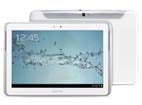Employees use mobile services and apps everywhere, including stressful areas such as construction sites, fire and accident scenes and oil rigs. For that reason, the availability of devices that can take a pounding is assumed to be important.
Uncertainty abounds, however, about whether the ruggedized device market is expanding or contracting. FierceMobileIT reports on a study by VDC Research that points to a dip in the fortunes of the ruggedized device sector due to increased use of consumer gear. The report says that the sector, which includes handhelds, tablets, notebooks and “forklift terminals,” contracted 6.1 percent to $4.1 billion globally. The site provided some context:
Bucking the downward trend, the rugged tablet segment increased 22 percent year-over-year in 2013, growth that is expected to continue this year. In addition, greater availability of rugged Android devices along with first-generation rugged Windows 8.1 embedded handheld devices will create increased opportunities this year, judges VDC.
Trimble’s Director of Product Management Joyce Tam doesn’t agree with VDC’s position that consumer electronics devices are superseding purpose-built ruggedized devices. She writes at Directions Magazine that the opposite is happening in ruggedized devices:
This year we will see a continuation of the trend to equip field workers with rugged devices. Companies that have used non-rugged tablets and smartphones for field work will be replacing them with rugged hand-helds as they realize breakage rates cost them more than deploying rugged devices in the first place.
The vagaries of the market haven’t brought product development to a halt. This week, Newsfactor posted a story about the Latitude 12 Rugged Extreme, a hybrid device, and the Latitude 14 Rugged Extreme Notebook. The description of the Latitude’s features provides a taste of what differentiates ruggedized devices:
The bottom line: Dell said its Latitude 12 and 14 Rugged Extreme are built to endure worst-case conditions. It’s the materials, including impact-resistant ultra-polymers and sturdy magnesium alloy, that seem to make the difference. The design also helps. Dell explained that data is protected from the harsh elements via sealed doors and compression gaskets even as fourth-generation QuadCool thermal management lets the machine perform at high temperatures.
Panasonic has a strong history in the ruggedized device game. In January, the vendor released the Toughpad FZ-M1, a 7-inch tablet. ReviewStudio reports that the company recently collaborated with Becrypt to add a higher level of security.
It is not surprising that there are different views on whether the market is expanding or contracting. It is likely that Bring Your Own Device (BYOD) trends play into this. A company that embraces the approach is more likely to let workers take their own tablets and smartphones to messy and rough places. It will be a tricky sector to assess until analysts get a better handle on the true level of BYOD activity among organizations that operate in harsh environments.



